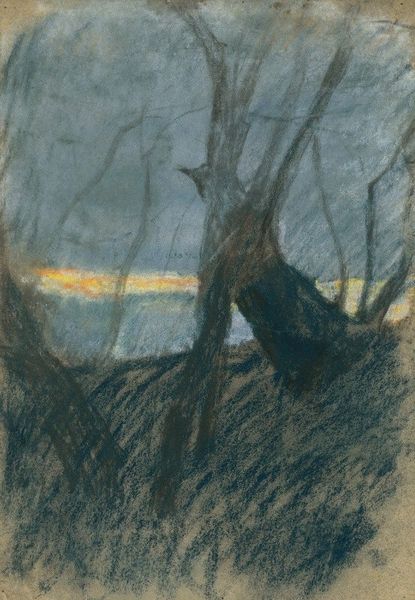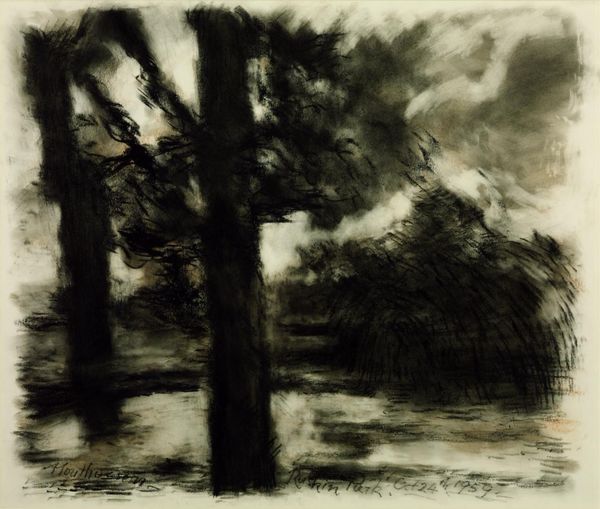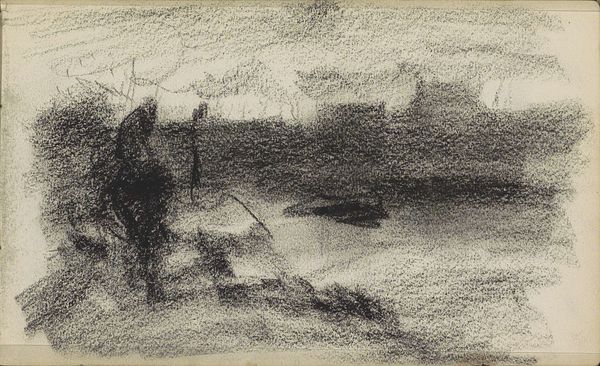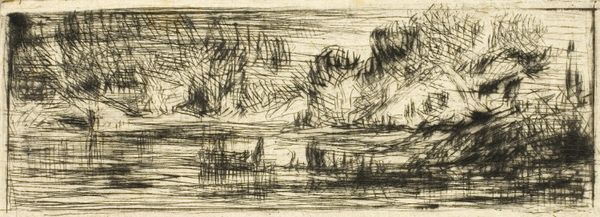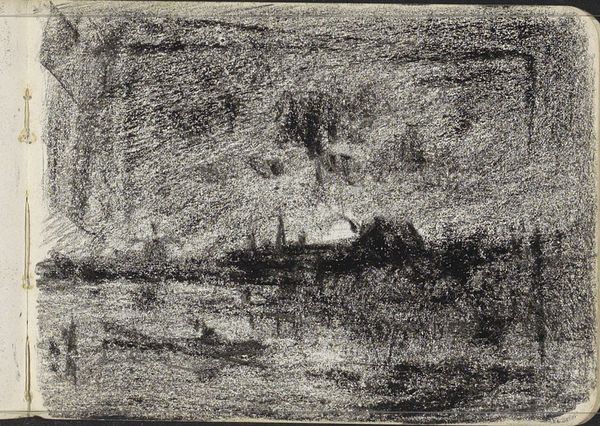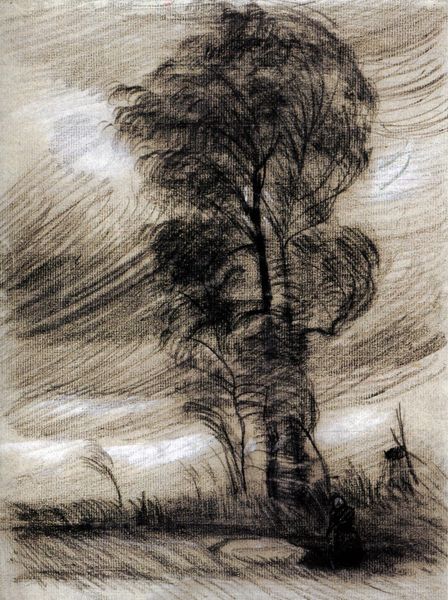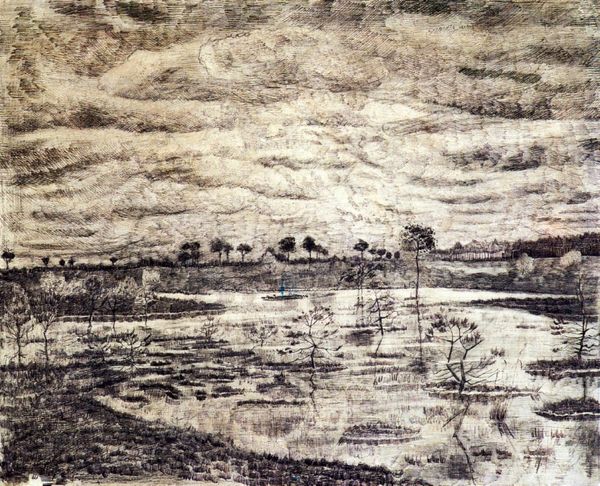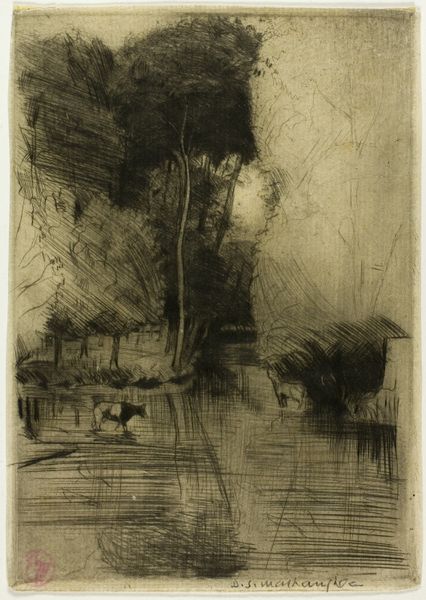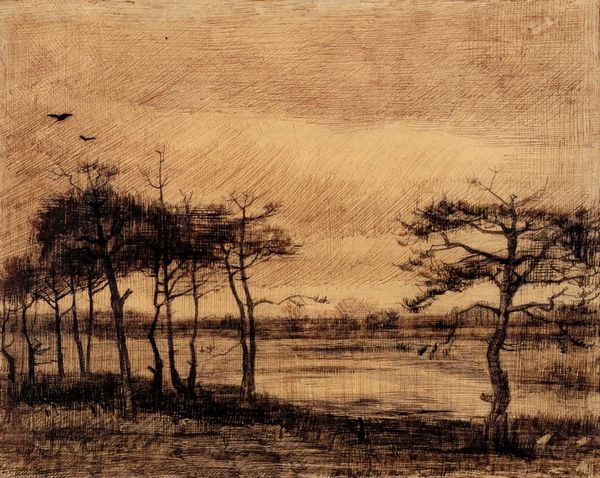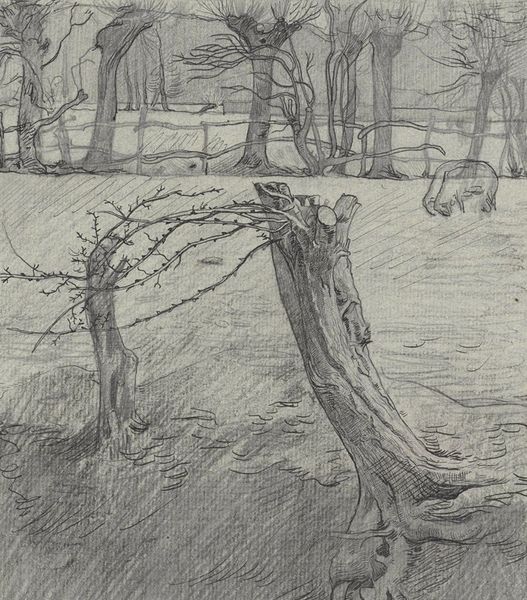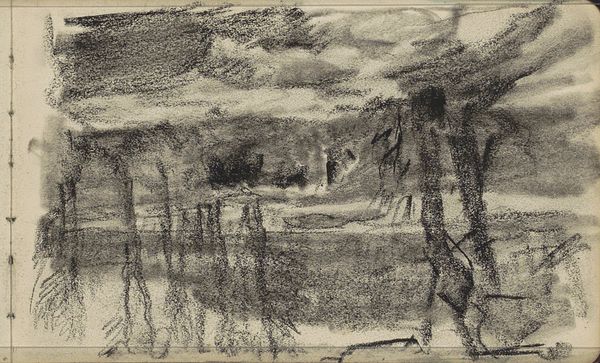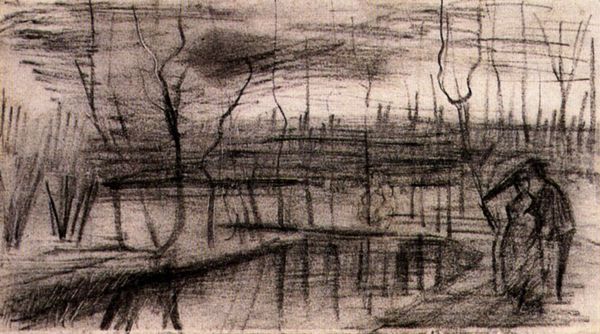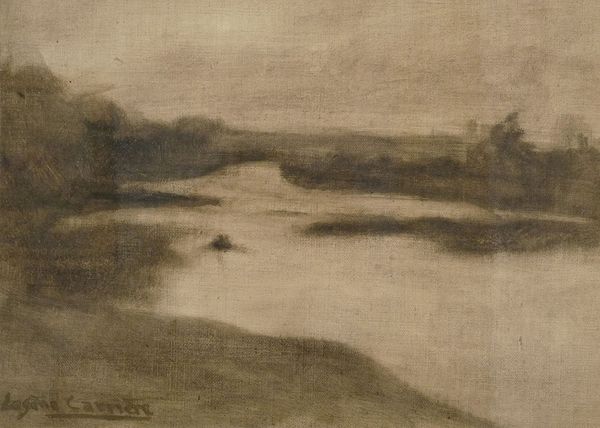
drawing, charcoal
#
drawing
#
landscape
#
charcoal drawing
#
line
#
charcoal
#
post-impressionism
Copyright: Public Domain: Artvee
Curator: Here we have Georges Seurat's "La voile blanche," created in 1890 using charcoal on paper. What’s your initial reaction? Editor: It’s haunting. The texture created with charcoal, the lack of distinct outlines…it all gives a rather ghostly impression, wouldn't you agree? Like a memory fading at the edges. Curator: It’s precisely this manipulation of the medium that I find so compelling. Consider Seurat’s careful application, the building up of tone with thousands of tiny strokes. We often think of him in relation to his pointillist paintings. Editor: Ah yes, challenging the established salon system with an avant-garde style, showcased at independent venues! Curator: Indeed! It’s all about deconstructing pictorial representation, and breaking down the labour within the visual culture and marketplace in France during the 1890s. By emphasizing his meticulous charcoal strokes, the labour becomes really visible. We become very aware of Seurat’s actions on the surface, as if he were slowly sifting light and shade through a sieve, one bit at a time. Editor: And this approach feels deeply connected to the political climate. Consider the anarchist ideals gaining traction, rejecting grand narratives for fragmented, individual actions. Does Seurat employ these philosophies when exhibiting in the Parisian salons? Is this the art he’s exposing to a burgeoning new class of buyers? The very same upper middle-class folks he's hoping will fill gallery walls! Curator: It suggests he is reflecting on how his drawing is an accessible medium, allowing more viewers access and interaction than just the elite upper classes. And I feel we should think about his focus, here: "La voile blanche", that single white sail—a striking contrast to the dark charcoal all around it. Editor: Yes, it acts as this kind of beacon in the piece. And its solitary presence also speaks to the increasingly independent character of artistic creation at the time. It brings awareness to the social politics around imagery and iconography. Curator: Right, the sail is almost blindingly hopeful despite all the darkness! Editor: It underscores the constant struggle to balance our own optimism within darker institutional frameworks. That the struggle continues on today proves art is prescient of our socio-political trajectory. Curator: Looking closer has been interesting. Thank you. Editor: The pleasure was all mine, reminding me how the study of art opens such interesting new avenues for cultural thought and historical perspectives.
Comments
No comments
Be the first to comment and join the conversation on the ultimate creative platform.
